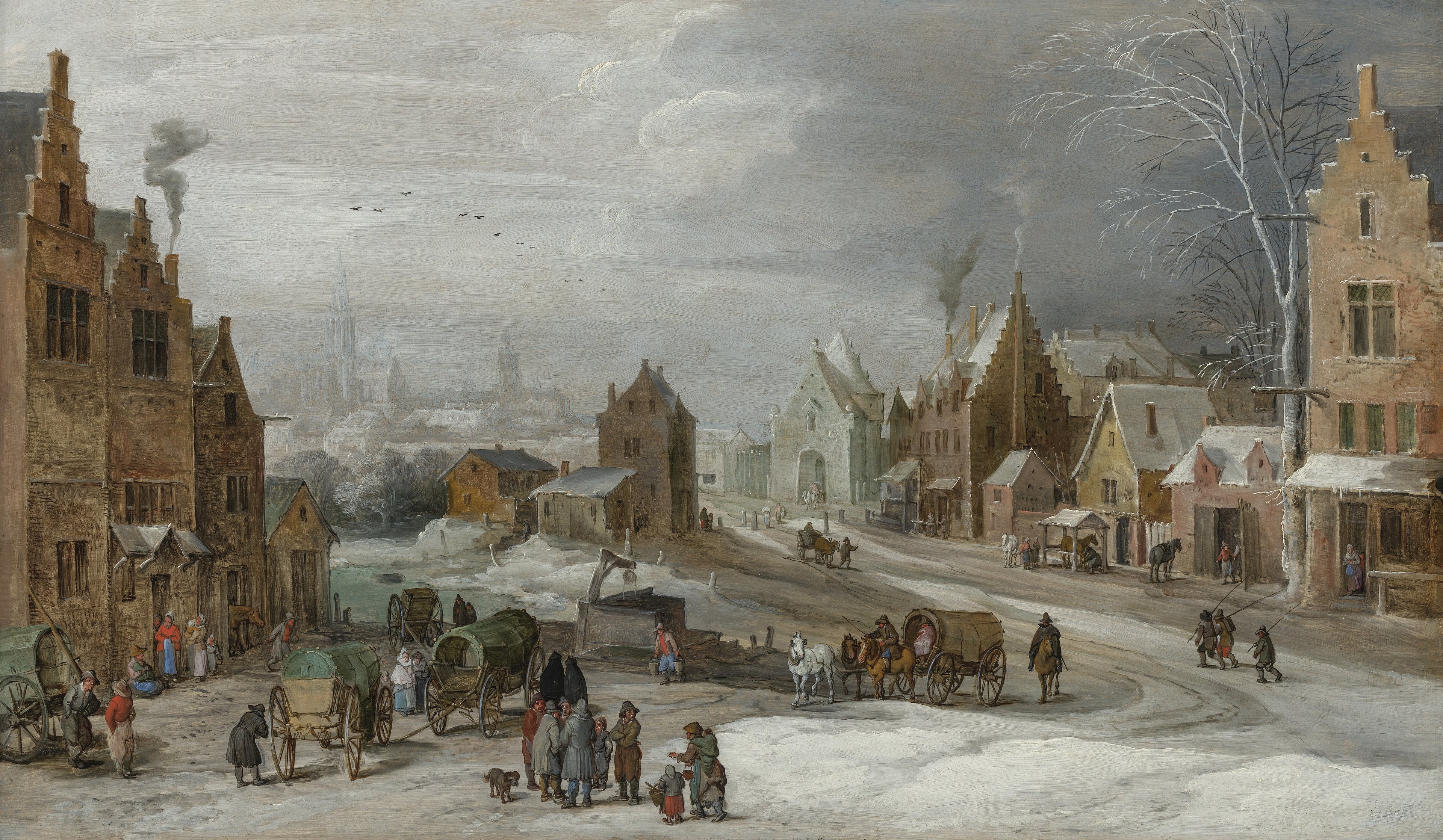
Joos de Momper and his contemporaries created detailed landscapes that impressively reflect the urban and rural life of the Netherlands in the 17th century. Their works show not only geographical diversity, but also the effects of climate and society on everyday life.
City in the course of time
From the 16th century onwards a whole series of sub-genres, such as mountain, river or coastal landscapes, developed in Dutch landscape painting. At least since the pioneering works of Pieter Bruegel the Elder (1525/30–1569), villages and towns were also the focus of artistic interest as places filled with vigorous life. Few countries in Europe had such a large density of cities as the Netherlands. The densely populated, commercial metropolises became a popular artistic motif and bore witness to fame, glory and prosperity. Valuable clues to the appearance of a city in changing times can be repeatedly found in the details of the depictions.
17th-century Flemish painting frequently took Antwerp, the country’s largest and most important city, as its theme. It offered an impressive sight simply due to its expansive size and soaring spire of the Cathedral of Our Lady, the largest church in the Netherlands. Although the metropolis on the River Scheldt was still a centre of world trade in the 16th century, it had now been overtaken by the up-and-coming Amsterdam.
Here, the artist’s attention is drawn not solely to the buildings of the city, but also to its inhabitants; their lively bustle fills the lanes and squares. Of great importance is the change of the seasons and its impact on living conditions in the early modern period, when abrupt climate change, the so-called “Little Ice Age”, further exacerbated the difficulties of people’s daily lives. Art began to depict their rural and urban worlds in a shallow, murky light.
Antwerp-born Joos de Momper the Younger was one of the most prolific exponents of Flemish landscape painting in the first half of the 17th century. By running a large studio, he was able to cope with the high demand. The painter owed his fame to the very many mountain landscapes in which he combined detailed observations with free invention. At the same time, and in accordance with Flemish custom, he often enlisted the services of specialists such as Jan Brueghel the Elder and Sebastiaen Vrancx for small figural depictions.
Text: Ulrich Becker